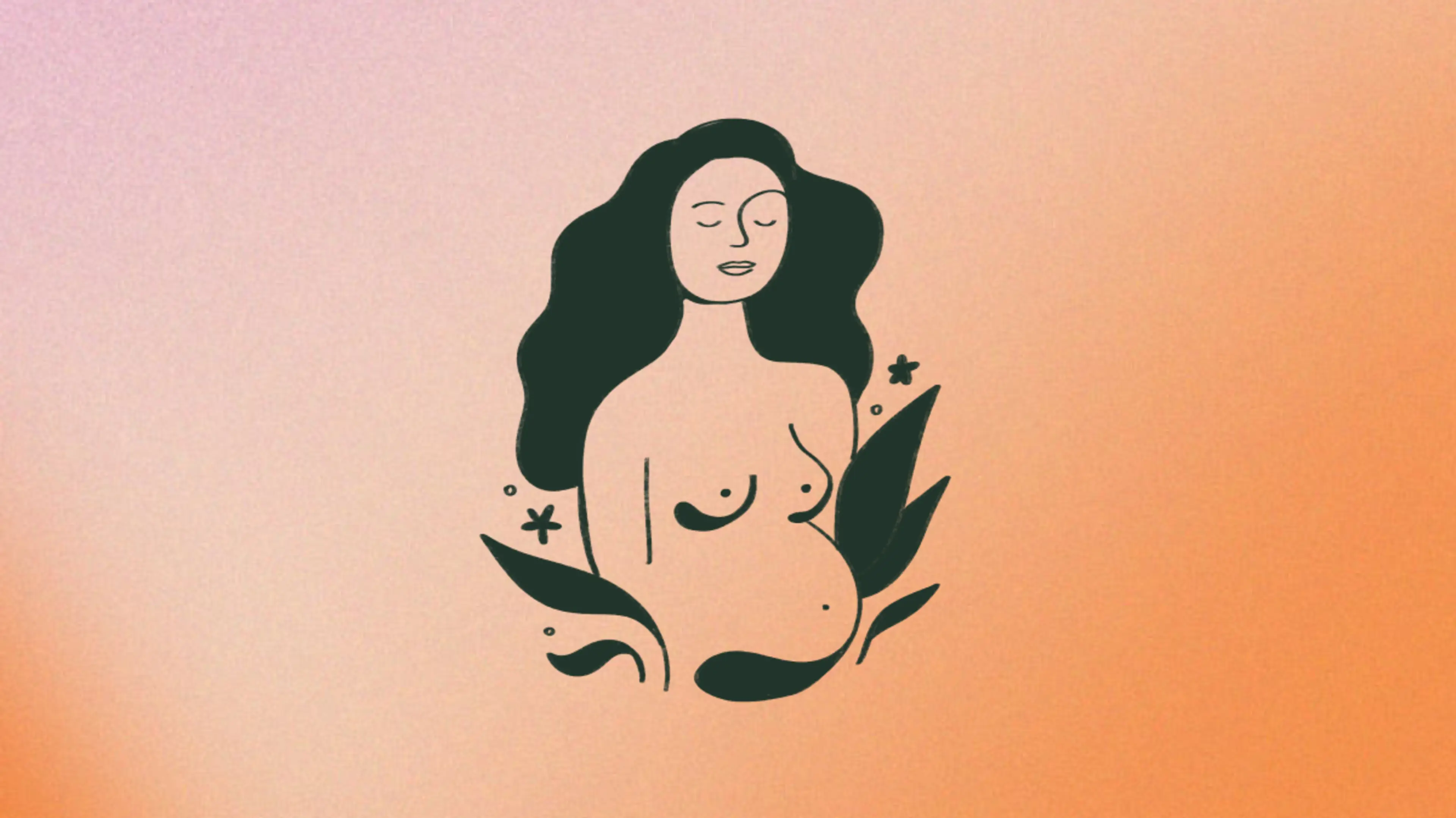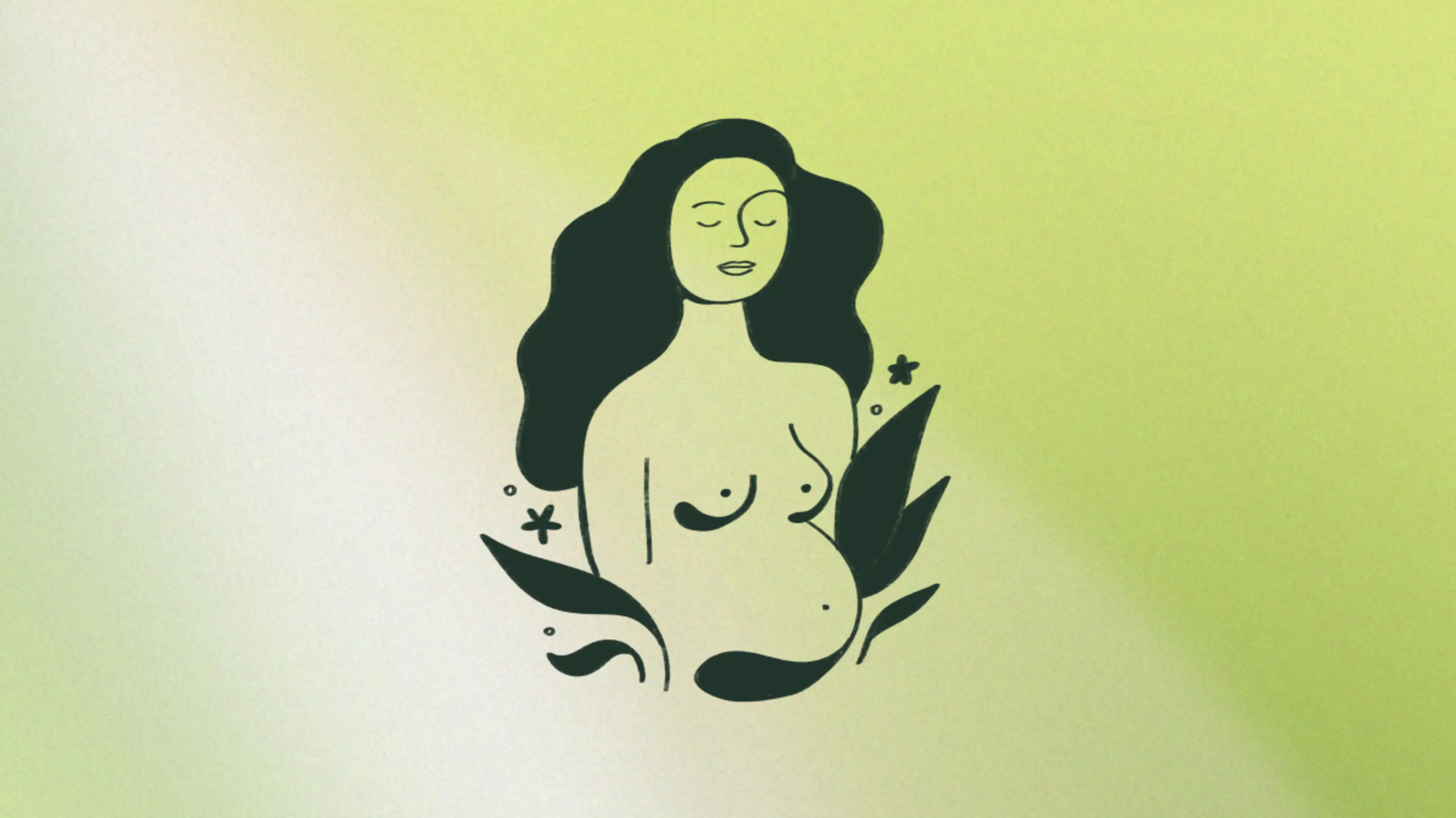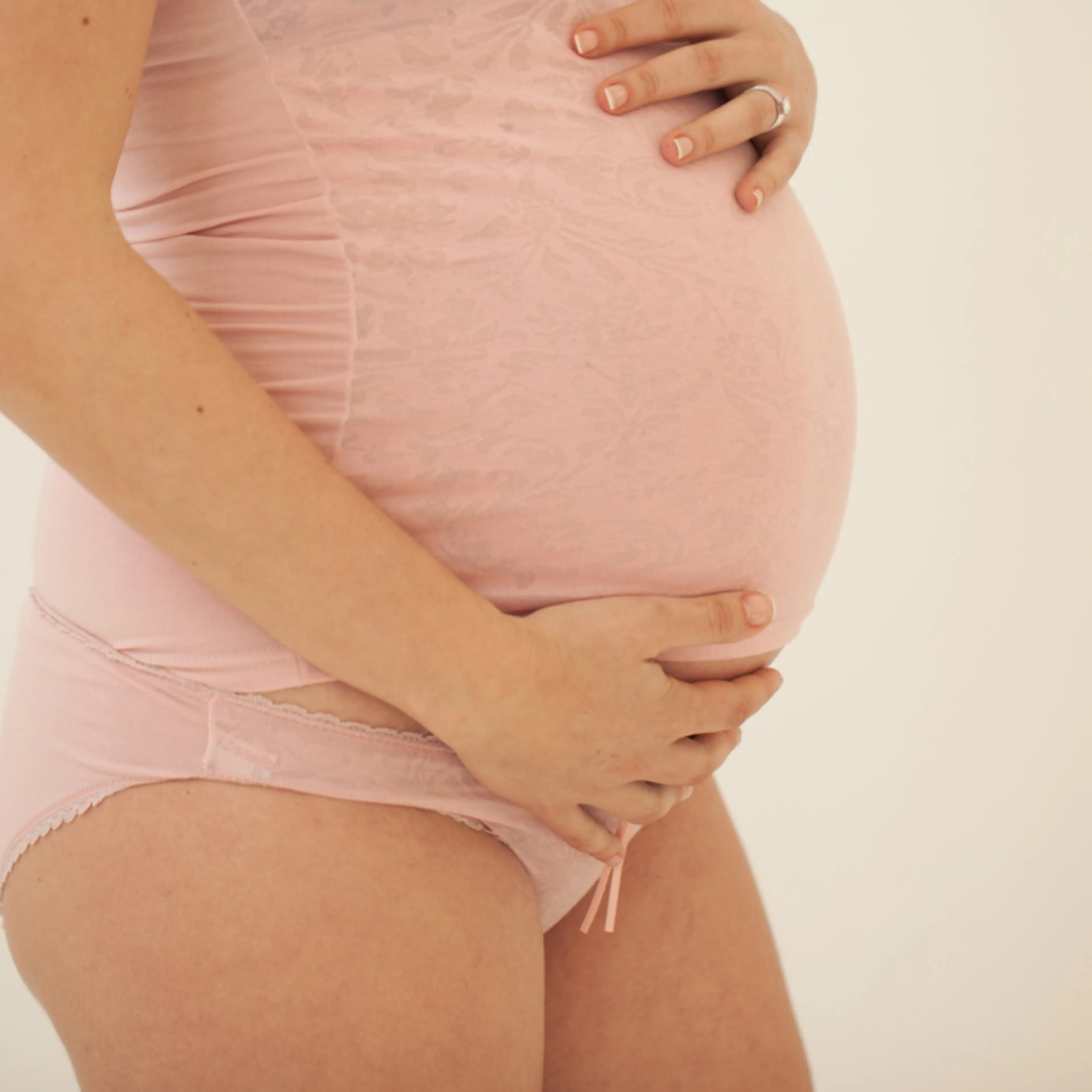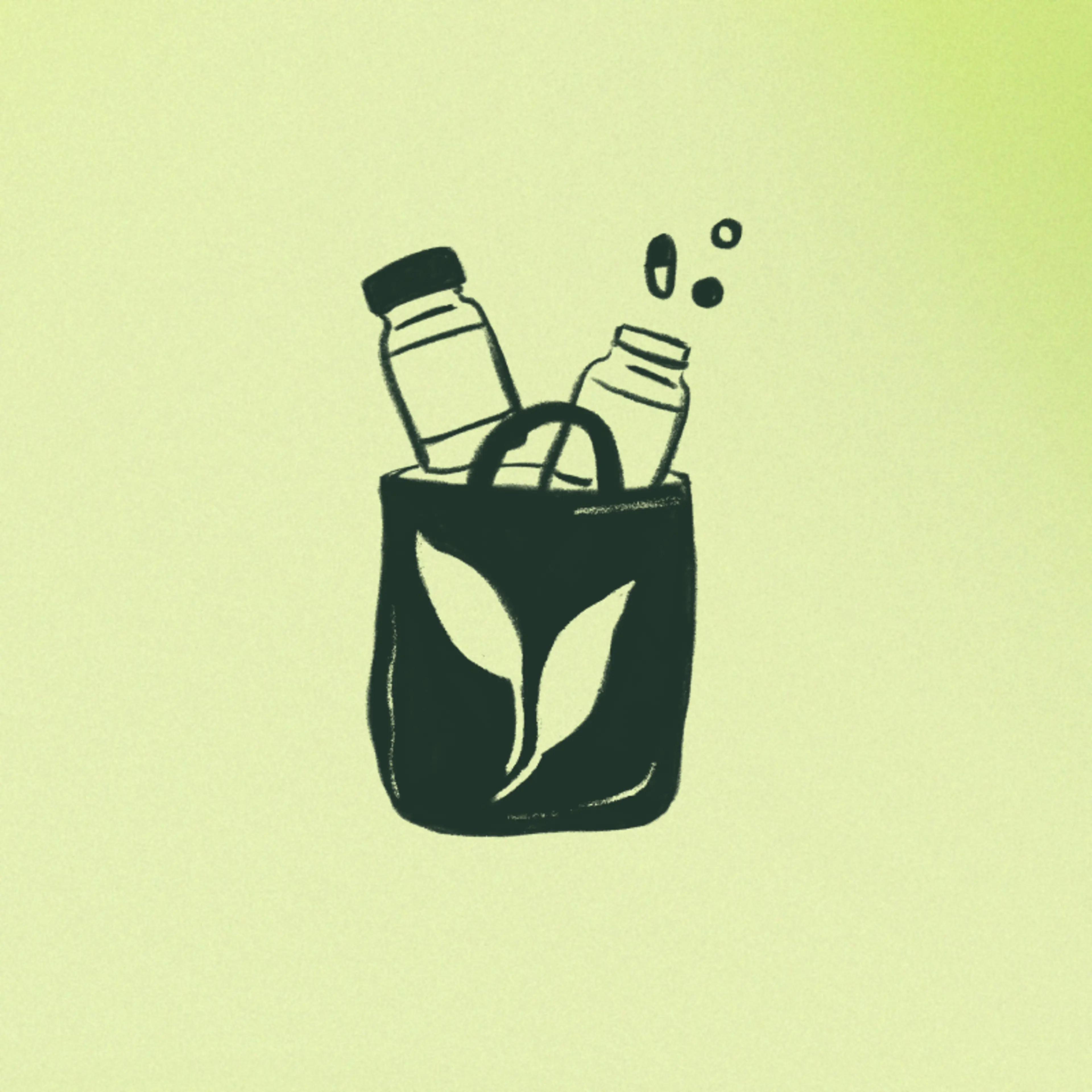So you’ve arrived at the glorious second trimester, or so they say. Hopefully, any nausea has left the building (aka your body) right around the 13-week mark, you're feeling more energized, and you’re out of that weird stage where your clothes are too tight, but you don’t exactly look pregnant.
And here's the really fun part, you might start to notice that your future baby is really exploring the space in there. From the beginning to the end of the second trimester, the baby will go from the size of a lime to the size of a head of cauliflower (and its weight changes from about .06 lbs to nearly 2 lbs). Most women gain the majority of their pregnancy weight this trimester, too. So it makes sense that as your baby’s body grows and changes, so will yours.
While you’re relishing all your glowy and energetic pregnancy vibes, it’s good to be aware that there are still some weird bodily changes you can expect to see in the second trimester. Here’s what to look out for.
You Feel Pelvic Pressure
With all the growing your baby is doing, it makes sense that you’d start to feel it.
You may notice an increase in pelvic pressure or a general feeling of heaviness in your vagina. It’s like putting a jar of peanut butter in a hammock—the hammock can support the weight, but it puts a little pressure in its center.
“At 20 weeks, your baby is about 300 times larger than at four weeks. They’ve grown from about the weight of a paperclip to nearly that of a can of soup. That increase in weight can cause a feeling of heaviness or pressure in your vagina,” says Dr. Bijal Toprani, a physical therapist at Hinge Health. This is a normal part of pregnancy and not something you need to fix or change, but if the feeling gets too intense, try to sit or lie down.
Then there’s also the fact that the pelvis is getting more flexible to prepare for birth (thanks to our pal, the hormone relaxin), and Dr. Karyn Eilber, urogynecologist, and co-author of A Woman's Guide to Her Pelvic Floor: What the F*@# is Going On Down There 1 says this can also cause a feeling of instability. “The effects of relaxin, in addition to the growing uterus and baby, can cause women to feel achy or pain in the pelvis,” she says.
What can you do?
First the not-so-great news. ”During pregnancy, it really may not be possible to relieve pelvic pressure,” Dr. Eilber says. Some pressure (mental and physical, but here we’re only talking about the latter) comes with the territory of carrying a human inside you.
“Tylenol is okay,” Dr. Eilber says, and it can help relieve some of that heaviness or soreness. She adds that other medications should be reviewed with your doctor.
Pregnancy-safe stretches,2 specifically the cow stretch—when you’re on your knees and arch your back to stretch the pelvis—may help some, too.
You Have Posture Changes and Lower Back Pain
Brace yourself: that pain and heaviness in your pelvis can also affect your lower back and hips. Dr. Kandis B Daroski, a physical therapist at Hinge Health, says this pain happens for several reasons, including changes in your posture, hormone changes that loosen your ligaments to help prepare for labor, and muscle weakness or imbalances. Plus, your bigger breasts and growing belly pull your center of gravity forward, leading to that telltale pregnancy waddle. “All of this can make everyday tasks seem harder and feel less comfortable,” she adds.
What can you do?
Imagine you’re a ballerina, keeping your ears, shoulders, and hips in line from top to bottom. (Don’t worry, the comparison ends there—no pregnant Swan Lake performances are in your future). You may not realize how far you’ve shifted forward or that your lower back is compensating, but being mindful of your posture can help relieve some of the pain. Dr. Daroski also recommends practicing upper back and core strengthening exercises while working toward flexibility in the front of the hips and pelvic area, which can help counterbalance the effects of a growing belly.
You can even try a modified pigeon pose (done sitting in a chair) to open the hips, and if your doctor gives it the okay, you can try rows with light weights or planks to strengthen the back and abs.
Your Feet May Change Size and Shape
It makes sense that your pants are tight (now is the time to embrace maternity leggings), but why do your feet feel like they’re busting out of your shoes? Your feet may begin to swell as early as the second trimester, but (and so sorry to your Nikes) some of the changes may be permanent, as feet can change shape and size during pregnancy.
“Thanks to a combination of hormones, which soften the connective tissues throughout your body, including in your feet, an increase in your body mass, and shifts in your posture, the arches of your feet can flatten and rotate inward a bit — this is also known as pronation,” says Ashley Rawlins, a physical therapist and clinical specialist at Origin. “As a result, your feet can become flatter and longer, and you may need to pick up a larger size.”
What can you do?
I wore heels to a wedding while pregnant, and let me tell you, a lot of older women had some feelings about it. But they might have been onto something. Rawlins says it’s a good idea to ditch the cute heels and choose to wear more sensible shoes throughout your pregnancy. Good arch support can help protect your feet under the changing demands.
Milk May Leak From Your Breasts
Remember how your boobs were achy and sore in the first trimester? That’s because the body was doing a little home renovation project, enlarging the milk ducts you’ve had since birth. The weird news is that means that you may start seeing milk dribble out of your nipples in the second trimester (from 16 weeks or so on), which can be a little off-putting (especially if it’s your first pregnancy). Just know your body is doing its job.
“Long before your baby is ready for it, your breast or chest tissue prepares for the job in a process known as lactogenesis. Driven by hormones secreted by the placenta, lactogenesis occurs during pregnancy and may cause a small amount of milk to leak from time to time. The pregnant body is so amazing,” Rawlins says.
What can you do?
Try to keep this in perspective: leaking milk is a good thing because it means your body is prepping to feed your baby (whether you choose to breastfeed is, of course, up to you). But if the leaking is annoying, there are cotton breast pads you can slip in your bra to absorb any wetness.
Read More: A Guide to Your Boobs from Pregnancy Through Postpartum
You're Super Hungry
So you’re not technically eating for two when one of you is only the size of a cauliflower, but you will be extra hungry in the second trimester. You need extra calories to support the growth of your baby, but also to fuel all the amazing things your body is doing (you know, like increasing your blood volume by almost 50 percent, 3 not to mention growing an actual, literal human).
What can you do?
This one is easy: if you’re hungry, eat! “Listen to your body—if you are craving something, go for it,” Dr. Daroski says. “Focus on making sure your meals are well-balanced with high fiber carbohydrates, proteins, and healthy fats in order to stay fuller longer. Many women find eating smaller, more frequent meals throughout the day helps them to avoid heartburn and feel overall more energy.”
Snacks are your friend (I was big on roasted chickpeas and popcorn), and don’t forget to keep some in your bag and in the car for any on-the-go hunger that strikes.
@expectful Replying to @expectful Glowing and growing 🤰✨ #pregnant #pregnancy #pregnanttok #pregnancytok #pregnanttiktok #pregnancytiktok #secondtrimester #expectful ♬ Dance You Outta My Head - Cat Janice
You Have Difficulty Sleeping
You may find it hard to stay asleep in the second trimester, and not just because you’re trying to decide on your baby’s name at 3 a.m.
“A growing bump and common pregnancy symptoms such as low back and pelvic pain and frequent urination can make sleeping less comfortable. Many women are not used to the new positions they now have to sleep in during pregnancy,” Dr. Daroski says, adding that after about 20 weeks of pregnancy, side sleeping is best.
This position provides good circulation, which may help reduce swelling. It also helps keep your pelvis in good alignment, which is important as your body releases hormones to loosen and relax your pelvic ligaments and help minimize low back pain.
What can you do?
Not everyone is a willing side-sleeper, and changing your entire sleep personality can be challenging. The thing is, you’ll have plenty of interrupted sleep ahead, so it’s important to get ZZZs whenever possible. One way to ease into side sleep is to get on the U-shaped pillow train. These are game changers for getting more comfortable with side sleep (and mortal enemies with your partner if they’re anything like mine). If you’re not a big pillow fan, Dr. Daroski also suggests putting a pillow between your knees to alleviate some of the pressure and pain you’re feeling.
You Notice Linea Nigra
It’s hard not to notice a thin, dark vertical line running from your belly button down to your pubic area—the color varies, but it’s always darker than your skin tone. This is known as linea nigra. Researchers still aren’t sure exactly what causes this, but hormones are definitely part of it (also, hello, darker nipples!).
What can you do?
Well, nothing, but don’t worry, this is an expected part of pregnancy and will go away postpartum.
You Feel Dizzy More Often
In the second trimester, you may experience dizziness randomly or when standing up too quickly. Your blood vessels expand, and as Dr. Daroski explains, this can make blood pressure drop, causing lightheadedness or dizziness. This is pretty innocuous, but you obviously wouldn’t want to fall or faint (or faceplant into your nephew’s birthday cake). Plus, feeling dizzy can be a little scary if you’re not expecting it, so you’ll want to be prepared if it does creep in.
What can you do?
To avoid dizziness, Dr. Daroski says it’s best to stay hydrated, avoid standing up too quickly, and lay on your side if you do feel lightheaded. If you have low blood pressure to begin with, make sure you’re getting enough salt, and consider drinking an electrolyte beverage or mixing one of those packets with water if your doctor approves.
You Pee a Lot (Like, a Lot)
Remember that can of soup that is your second-trimester baby? Well, that’s not the only thing putting pressure on your bladder. Your uterus is growing, too. This power duo of baby and uterus means you have to pee. All the time.
Hopefully, you can hold it, but “some women may even experience loss of bladder control (urinary incontinence),” says Dr. Eilber.
What can you do?
The best thing you can do is go to the bathroom (groundbreaking, I know). It can help to limit fluids before bed, but make sure to drink enough during the day so you don’t get dehydrated.
“Squeezing your pelvic floor or tightening up with a sensation as if you’re trying to stop yourself from passing gas (basically a Kegel exercise) can make the feeling of needing to go pee decrease,” Dr. Eilber says. The good news? If you really can’t muster the energy to get up in the middle of the night for the third time, there’s no harm in holding it until morning. “It is definitely not bad to hold your urine if you don’t want to get up, again, with the assumption that someone is not having loss of bladder control,” she adds.
You've Got Round Ligament Pain
Round ligament pain is one of those pregnancy terms (like lightning crotch and bloody show) that get thrown around a lot, and you may not be entirely sure what it means. We’ve got you! As Dr. Daroski explains, the round ligaments anchor the sides of your uterus to your pubic bone and keep your uterus in the proper position. “But as your baby grows and the uterus expands, they must stretch to accommodate this growth. Sudden movements can lead to painful spasms you feel in your hip, groin, and lower abdomen,” Dr. Daroski adds.
What can you do?
First, round ligament pain is not a sign that something is wrong, but it will probably be uncomfortable. It’s different than a cramp or a contraction because it’s a flash of pain that recedes quickly. But there are things you can do to lessen the discomfort. Try to limit sudden movements. For example, when getting out of bed, try it in stages versus all at once (tell yourself you’re rolling to your side, pushing up, then swinging your legs).
“Before getting out of bed or lifting, contract your abdominal and pelvic muscles for extra support. If discomfort persists, you can try a gentle stretch to the area, such as a cat/cow,” Dr. Daroski says.
Lean Into Your Second Trimester Body
The second trimester is fantastic in many ways. You finally have the energy to build the nursery furniture you ordered between bouts of nausea (or, at the very least supervise the building). You look pregnant but can still move comfortably, and you’re actually starting to identify as a pregnant person.
That’s all great, but it’s helpful to know about second-trimester bodily changes so you’re not surprised by a zip of round ligament pain or a leaky boob. Remember, there are plenty more (sometimes bizarre) changes coming your way in the third trimester that show up just when you start to get used to your second-trimester body. Guess what? You’ll get through these new ones, too.












